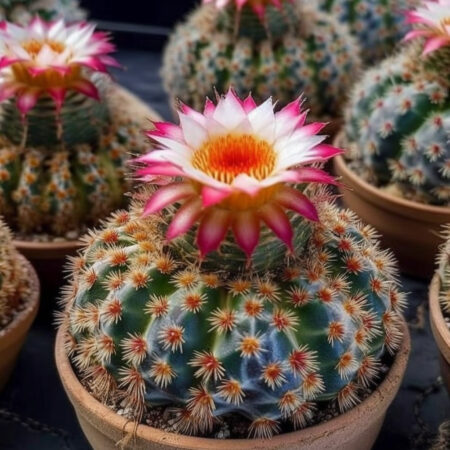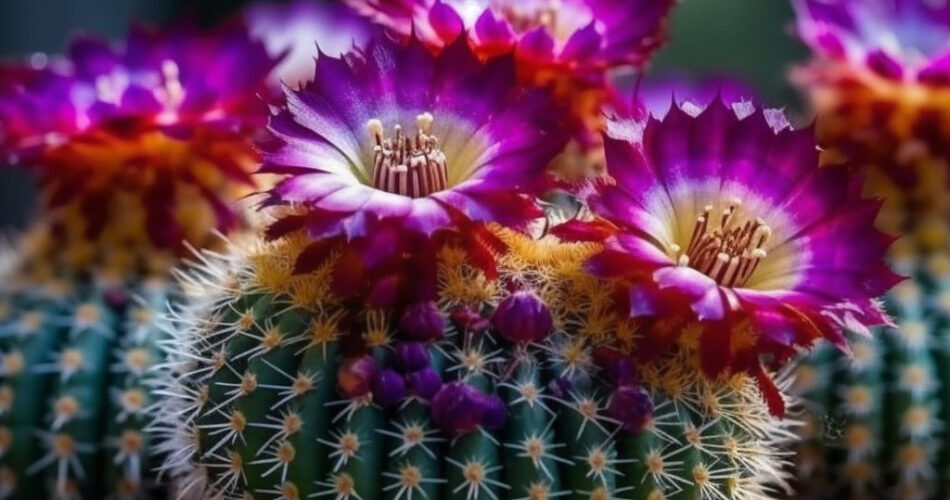Key Takeaways:
- Choosing the right Aporocactus variety is crucial for successful growth.
- These plants thrive in a warm and bright environment with well-draining soil.
- Propagation can be done through seeds or stem cuttings.
- This cactus plants prefer bright, indirect sunlight and should be protected from intense midday sun.
- Watering should be done when the soil partially dries out, and excess water should be drained.
- Fertilize with a balanced, water-soluble fertilizer during the active growing season.
- Avoid over-fertilizing and refrain from fertilizing during the plant’s dormant period.
Growing Aporocactus Plants: Getting Started
When it comes to growing Aporocactus plants, there are a few key factors to consider to ensure their success. From selecting the right variety to creating the perfect growing environment and understanding propagation methods, this section will provide you with the essential information you need to get started.
1. Selecting the Right Aporocactus Variety for Your Space
Choosing the right Aporocactus variety is crucial for ensuring successful growth. There are several popular varieties to consider, each with its own unique characteristics. One popular variety is Aporocactus flagelliformis, also known as the rat’s tail cactus. This variety features long, trailing stems and vibrant pink flowers.
Another option is Aporocactus martianus, commonly known as the Martianus cactus. This variety has thick stems and produces stunning tubular blooms in shades of pink, red, or purple. Additionally, Aporocactus didymus, the twin-spined cactus, is a favorite among collectors due to its striking appearance, featuring slender stems covered in fine spines.
Consider the available space in your garden or indoor area and choose a variety that suits your preferences and growing conditions. Research each variety’s specific care requirements to ensure the best results.
2. Creating the Perfect Growing Environment
These plants thrive in a warm and bright environment. They prefer temperatures between 65-75°F (18-24°C) during the day and slightly cooler temperatures at night. Locate your Aporocactus plants in a spot that receives bright, indirect sunlight throughout the day.
In terms of soil, these cacti prefer a well-draining mix that replicates their natural habitat. You can create a suitable mix by combining regular potting soil with perlite or coarse sand to improve drainage. Avoid using heavy clay soils that can retain too much moisture.
It’s important to note that Aporocactus plants are epiphytic, which means they grow on other plants in their natural habitat. To mimic their preferred growing conditions, consider using a hanging basket or a container with a trellis or support for the stems to hang. This will allow the stems to trail down, creating a visually appealing display.
3. Propagation: From Seeds to Mature Plants
Propagation is an exciting aspect of cultivating it. While these cacti can be challenging to propagate from seeds, it is possible with the right techniques. Start by collecting mature seeds from a healthy Aporocactus plant. Sow the seeds in a well-draining soil mix and keep them consistently moist in a warm, well-lit area. It may take several weeks to see germination.
Another popular method of propagation is through stem cuttings. Carefully remove a healthy stem from the mother plant, ensuring it is at least 4-6 inches long. Allow the cutting to dry for a few days, then plant it in a well-draining mix. Keep the soil lightly moist and provide bright, indirect light. The cutting will develop roots over time and eventually grow into a new plant.
Regardless of the propagation method you choose, it’s important to provide proper care and monitoring to ensure the young plants’ successful development.

Caring for Aporocactus Plants: Essential Tips and Techniques
Proper care is crucial for the health and vitality of Aporocactus plants. Paying attention to light and sun requirements, understanding watering needs, and providing adequate fertilization are key components of their care. Let’s explore these essential tips and techniques in detail.
1. Light and Sun Requirements
Aporocactus plants thrive in bright, indirect sunlight. They prefer a few hours of direct morning or evening sun but may scorch under intense midday sun. If growing indoors, place your Aporocactus plant near a south or west-facing window where it can receive bright, filtered light. If the lighting is insufficient, consider supplementing with artificial grow lights to ensure optimal growth.
Monitor the plant for signs of sunburn, such as yellowing or browning of the stems or leaves. If sunburn occurs, move the plant to a shadier location and allow it to recover.
2. Watering: Finding the Balance for Optimal Growth
Watering Aporocactus plants can be challenging, as the right balance is crucial. These cacti require periodic watering to thrive but are susceptible to root rot if overwatered. Aporocactus plants have unique water requirements as they are epiphytic, meaning they absorb moisture through their roots but also through their stems.
It’s important to allow the soil to dry out partially between waterings. Stick your finger into the soil to check its moisture level before watering. If the top inch of soil feels dry, it’s time to water. When watering, thoroughly soak the soil, allowing any excess water to drain away. Avoid leaving the plant sitting in standing water.
During the winter months, when the plant enters its dormant phase, reduce watering frequency significantly. This helps prevent root rot and encourages the plant to rest.
3. Fertilizing: Nourishment for Success
Fertilizing your Aporocactus plants is essential for their overall growth and health. During the active growing season, which typically occurs from spring through summer, provide a balanced, water-soluble fertilizer formulated for cacti and succulents. Follow the instructions on the fertilizer packaging for the proper dilution and frequency.
Be cautious not to over-fertilize, as this can lead to salt buildup and cause harm to the plant. Always water the plant thoroughly before applying fertilizer to prevent potential root damage.
During the dormant period in winter, refrain from fertilizing as the plant requires less nourishment during this time.
FAQ
Question: How do I choose the right Aporocactus variety?
Choosing the right Aporocactus variety is crucial for ensuring successful growth. Consider the available space in your garden or indoor area and choose a variety that suits your preferences and growing conditions. Research each variety’s specific care requirements to ensure the best results.
Question: What is the ideal growing environment for Aporocactus plants?
Aporocactus plants thrive in a warm and bright environment. They prefer temperatures between 65-75°F (18-24°C) during the day and slightly cooler temperatures at night. Locate your Aporocactus plants in a spot that receives bright, indirect sunlight throughout the day.
Question: How can I propagate Aporocactus plants?
Aporocactus plants can be propagated through seeds or stem cuttings. Propagation from seeds can be challenging but possible with the right techniques. Stem cuttings can be taken from a healthy plant and rooted in a well-draining mix.
Question: What are the light and sun requirements for Aporocactus plants?
Aporocactus plants thrive in bright, indirect sunlight. They prefer a few hours of direct morning or evening sun but may scorch under intense midday sun. If growing indoors, place your Aporocactus plant near a south or west-facing window where it can receive bright, filtered light.
Question: How should I water my Aporocactus?
It’s important to allow the soil to partially dry out between waterings. Stick your finger into the soil to check its moisture level before watering. When watering, thoroughly soak the soil, allowing any excess water to drain away. Avoid leaving the plant sitting in standing water.
Question: How often should I fertilize my Aporocactus?
During the active growing season, from spring through summer, fertilize your Aporocactus plants with a balanced, water-soluble fertilizer formulated for cacti and succulents. Be cautious not to over-fertilize and follow the instructions on the fertilizer packaging for the proper dilution and frequency. Refrain from fertilizing during the dormant period in winter.
Question: Can I grow It indoors?
Yes, Aporocactus plants can be grown indoors. Place them near a south or west-facing window where they can receive bright, filtered light. Supplementing with artificial grow lights may be necessary if the lighting is insufficient.
Question: How do I prevent sunburn on my Aporocactus?
Monitor your Aporocactus plants for signs of sunburn, such as yellowing or browning of the stems or leaves. If sunburn occurs, move the plant to a shadier location and allow it to recover.




Comments